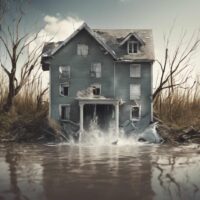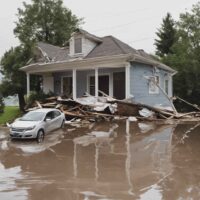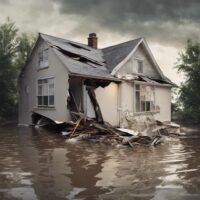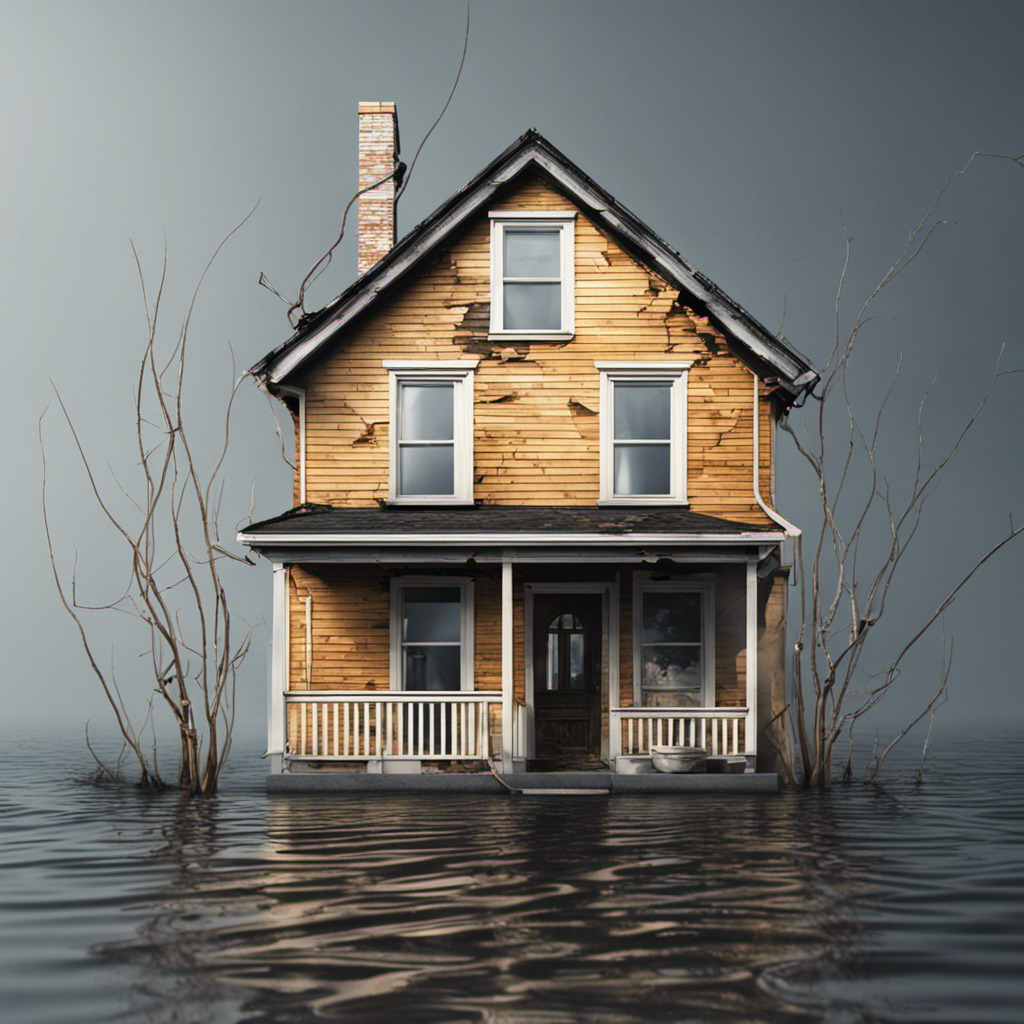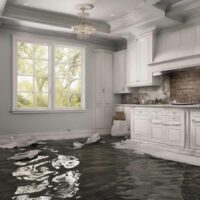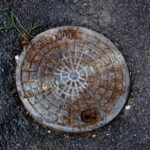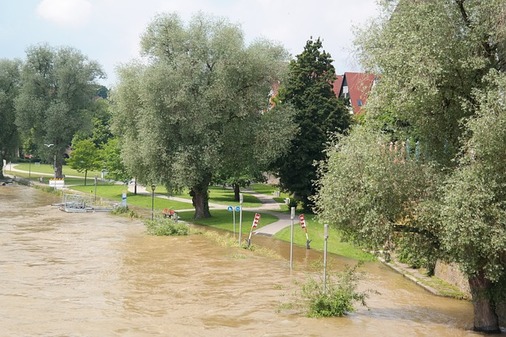
Unwanted water damage in your home is like an unexpected rainstorm indoors, leaving you with a mess that begs for attention. This guide steps in as your reliable friend, breaking down the seemingly overwhelming task of cleaning up after water damage into simple, manageable steps. Imagine it as a helpful neighbor, offering straightforward advice to guide you through the process, from understanding the extent of the damage to restoring your home’s warmth and safety. We’ll use clear language and practical tips, making the journey of cleaning up after water damage less of a challenge and more of a reassurance that you can reclaim your space.
Your home is your haven, and when water intrudes unexpectedly, it disrupts that sense of comfort. This guide, your companion in this cleanup journey, aims to simplify the complex task ahead. From ensuring safety and salvaging belongings to addressing flooring and preventing mold, we’ll walk through each step with you, using words that make the process clear and achievable. So, if you find yourself facing the aftermath of water damage, join us in this comprehensive guide, and let’s navigate the cleanup process together, bringing your home back to its cozy and secure state.
See also our post on 15 Important Water Damage Restoration Tips
Assessing the Extent of Damage
Before diving into cleanup, it’s crucial to understand the scope of the water damage. Take your time to assess the damage and its extent. Ou can go about it with the following way:
1.1 Survey the Affected Areas
Thoroughly examine the areas impacted by water. Check walls, floors, ceilings, and personal belongings for signs of damage.
1.2 Identify the Water Source
Determine the source of the water – is it from a leak, flood, or burst pipe? Fixing the source is the first step to prevent further damage.
1.3 Evaluate Structural Integrity
Assess the structural integrity of your home. Look for signs of warping, sagging, or compromised foundations that may require professional attention.
1.4 Check for Mold Growth
Keep an eye out for mold. Mold can start growing within 24 to 48 hours after water damage, so early detection is crucial.
1.5 Document the Damage
Take photos or videos of the damage for insurance purposes. Documenting the initial state helps in the claims process and provides a clear record of the damage.
Safety First
Safety should be the top priority when cleaning up after water damage. Before anything else, the first action before clean up should be considering your safety and that of everyone and everything involved by going about the following:
2.1 Turn Off Electricity
If water has reached electrical outlets or appliances, turn off the electricity to prevent electrical hazards.
2.2 Wear Protective Gear
Put on protective gear, including rubber gloves, boots, and a mask, to avoid contact with contaminated water and potential airborne particles.
2.3 Ventilate the Area
Increase ventilation by opening windows and doors. This helps in dissipating lingering odors and improving air quality.
2.4 Use Caution on Wet Surfaces
Be cautious on wet surfaces to avoid slips and falls. Place non-slip rugs or towels on slippery areas.
2.5 Beware of Contaminants
If the water damage involves sewage or contaminants, avoid direct contact and consider professional assistance for cleanup.
Removing Water and Moisture
Efficiently removing water is crucial to prevent further damage and mold growth. You don’t want water to cause any more damage so you should go ahead to remove the moisture or water doing the following:
3.1 Use a Wet/Dry Vacuum
Employ a wet/dry vacuum to remove standing water. Ensure the vacuum is suitable for water use to prevent damage.
3.2 Mop and Towel Dry
Use mops and towels to soak up excess water from floors and surfaces. Pay attention to corners and hard-to-reach areas.
3.3 Deploy Dehumidifiers
Place dehumidifiers to remove excess moisture from the air. Controlling humidity is essential for preventing mold.
3.4 Open Windows and Doors
Promote air circulation by keeping windows and doors open. Fresh air aids in drying out the space.
3.5 Consider Professional Water Extraction
For significant water damage, consider professional water extraction services. Professionals have the equipment to efficiently remove large volumes of water.
Salvaging Belongings
Rescuing personal items affected by water damage is a priority. Of course, clean-up involves rescue. Go ahead and rescue your belongings through these steps:
4.1 Move Valuables to Dry Areas
Transfer valuable belongings to dry areas to prevent further damage. Elevate items on blocks or racks to allow air circulation.
4.2 Separate Damaged Items
Separate damaged items from salvageable ones. Focus on salvaging sentimental or irreplaceable items.
4.3 Clean and Disinfect Belongings
Clean and disinfect salvageable items. Use mild soap and water for cleaning, and consider professional cleaning for valuable items.
4.4 Dry Clothing and Fabrics
Dry clothing and fabrics thoroughly. Use a combination of air-drying and machine drying to prevent mold growth.
4.5 Consult Restoration Professionals
If valuable or antique items are severely damaged, consult restoration professionals for specialized care.
See also our post on A Comprehensive Guide on How to Repair Water-Damaged Landscaping
Addressing Flooring and Carpets
Flooring often takes a hit during water damage, requiring specific attention. There are certain things to consider and do with regard to your flooring after water damage:
5.1 Remove Wet Carpets and Padding
Lift and remove wet carpets and padding. Dispose of padding properly, as it can harbor mold.
5.2 Dry Subflooring
Thoroughly dry the subflooring before reinstalling new flooring. Use fans and dehumidifiers to expedite the drying process.
5.3 Inspect and Clean Flooring
Inspect the flooring for damage. Clean and disinfect hard surfaces, and replace damaged sections as needed.
5.4 Elevate Furniture
Elevate furniture off wet flooring to allow air circulation. Place aluminum foil or blocks under furniture legs to prevent staining.
5.5 Consider Professional Flooring Services
For extensive flooring damage, consider professional flooring services for removal, replacement, and installation.
Preventing Mold Growth
Preventing mold is a critical aspect of post-water damage cleanup.
6.1 Dry Within 48 Hours
Ensure that all affected areas are thoroughly dried within 48 hours to prevent mold growth.
6.2 Use Mold Inhibitors
Apply mold inhibitors to cleaned surfaces. These products help prevent mold from returning.
6.3 Monitor Humidity Levels
Regularly monitor and control indoor humidity levels. Keep levels between 30% and 50% to discourage mold growth.
6.4 Ventilate Crawl Spaces
Ensure proper ventilation in crawl spaces to prevent stagnant air and moisture buildup, minimizing the risk of mold.
6.5 Inspect Regularly
Regularly inspect areas prone to mold growth, such as basements and attics. Early detection allows for prompt action.
Restoring and Rebuilding
Once the cleanup is complete, focus on restoring and rebuilding your home. You should take the following steps into consideration:
7.1 Repair Structural Damage
Address any structural damage identified during the assessment. Consult professionals for repairs as needed.
7.2 Reinstall New Flooring
Install new flooring after ensuring the subfloor is dry and structurally sound. Choose water-resistant materials for added protection.
7.3 Repaint and Refinish
Repaint walls and refinish surfaces as necessary. This step not only enhances aesthetics but also seals surfaces to prevent future water damage.
7.4 Enhance Waterproofing Measures
Consider enhancing waterproofing measures in vulnerable areas. This may include sealing cracks, installing sump pumps, or adding exterior waterproofing.
7.5 Schedule Professional Inspections
Schedule professional inspections for electrical, plumbing, and structural systems. Identifying and addressing potential issues early prevents future water damage.
See also our post on Detailed Water Damage Restoration Checklist
Conclusion
Following this guide will provide you with the knowledge and helpful tips to navigate the challenges of post-water damage cleanup. Keep in mind that restoring your home involves more than just repairing physical damage; it also involves regaining the safety, comfort, and tranquility that it once offered. Cleaning up after water damage is a thorough process that demands attention to detail and a systematic approach. From assessing the damage to preventing mold growth and restoring your home, each step is crucial for a successful recovery.
